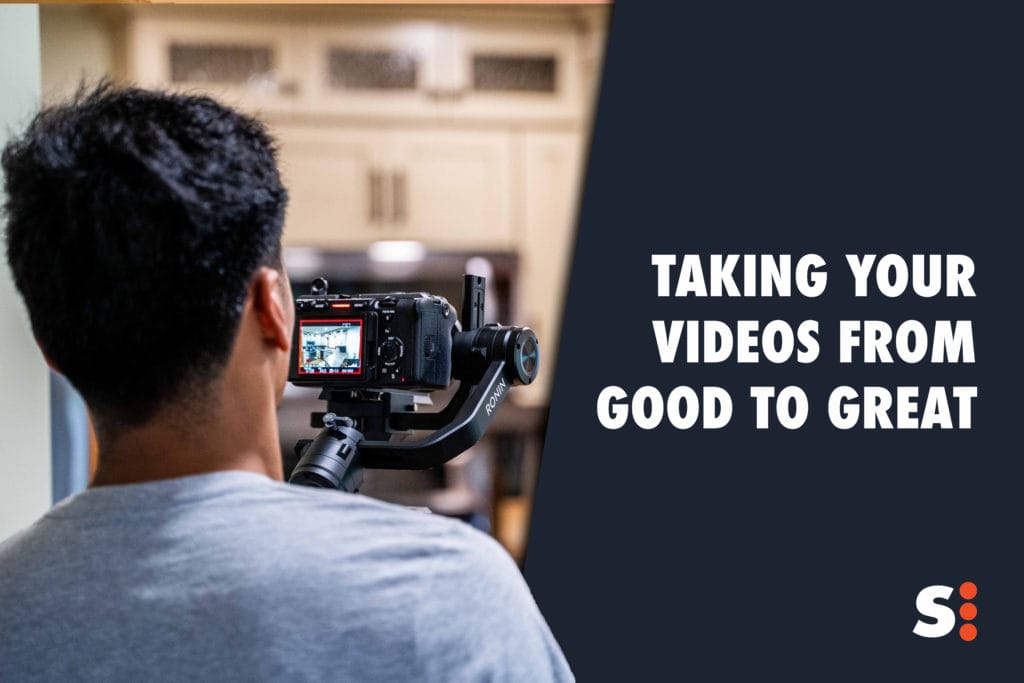
Through my years of video production experience, I have been able to define what takes videos from good to great. I have seen an abundance of poorly made videos that don’t accomplish what they were intended to. Your message deserves to be seen by the world in its best light. That is why I am here to walk you through the three fundamentals of an engaging video.
1. Tell a Great Story
The story you want to tell should be clearly listed before moving it into production. Think about your video as a car. Cars need fuel, that fuel is your story.
The story is what is going to move your car (video) from point A to point B. If your video is “out of gas”, your message will not be presented well. Here are five things I like to consider when interviewing guests during video shoots.
Define the Character
The first step is the character in your story. Who are you trying to target? In other words who is the audience? Zig Ziglar said, “If you aim at nothing, you will hit it every time.” You have to know who you are aiming at in order to hit the target.
Define the Problem
The second step in the process is defining the problem. If you don’t know what problem you or your brand is trying to solve, then you have a very small chance of success. Lacking clarity on the problem you are trying to solve will often lead to failure, being unfocused, and being frustrated on this journey.
Introduce the Guide
Part three is introducing the guide. The guide is who will take the frustrated customer from frustration to success. That means that you have to define who you are as the guide, and why the customer should trust you with their problem. There has to be a level of trust where a potential customer can see that you know what you are doing. They have to be able to trust you with their problems. This all connects back to the importance of knowing what problem you are trying to solve.
Paint a Picture of Success
Step four is painting a picture of success for the customer. Very similar to step three, the goal is to give the potential customer a vision of success. Unless the customer has a clear vision of you solving their problem, they won’t choose you over the competitors.
Resolution
Lastly, the resolution. This is the exciting part. This is the part of the journey where the customer chooses you for your expertise, and you get to solve their problem.
This five-step process is essential if you want to gain more customers and scale your business.
2. Capture High-Quality Audio
Most viewers can deal with low-resolution videos. But what loses people’s attention is poor audio quality. If potential customers can’t hear you sharing your message, they will never convert. At Sleekfire we have top-tier audio equipment, but the reality is that most people don’t have access to this. Here’s the good news: there are steps you can take to enhance your audio quality without spending your hard-earned dollars on expensive equipment.
The first step towards better audio is to avoid shooting in large spaces with hard surfaces. Sound bounces off of hard surfaces. This causes very distracting echoes. A few practical tips to reduce echoes are simply avoiding hard surfaces. Go to a smaller room with lower ceilings and carpet. Or just surround yourself with soft things. Put blankets or clothes on the ground to reduce echoing.
Audio is just as important as a clearly defined story because audio is a tool that captures your story. The key is to have as little distraction as possible in your videos. The average view duration of a video in 2022 is only 50%. That means that you have to make the first half of your video the best it can be.
One thing to keep in mind when recording audio is your decibel level. The decibel level is your guide for how loud your audio will be. If the level is too high, then your audio will start to “clip” which in short means you are recording so much signal that you are losing data. This is what is occurring if you ever hear a crackle in your audio. If you are recording a video on a phone you will most likely have no control over your decibel level. But if you are recording on a mirrorless or DSLR (digital single-lens reflex) camera you can have full control over how much audio data your camera intakes.
One other aspect of audio recording to keep in mind is what type of microphone you have. There are two main categories of microphones: Cardioid, and Supercardioid. Some microphones are more or less sensitive to certain frequencies. That being said, certain mics are better to use as close as possible to the speaker’s mouth. A good example of this would be a podcast microphone. Then there are shotgun-style microphones. This is what you will commonly see on top of cameras or boom poles. These microphones are dialed in to capture different frequencies so you can be further away from the microphone and still capture a clean signal.
Audio Clipping
The moment the audiometer hits zero you will experience audio clipping and loss of information. Generally, it is good to be recording your audio at -12 Db. This should result in a clean and crisp audio recording depending on the speaker’s volume.
Below is a short video that shows examples of what good and bad audio levels sound like.
3. Control Your Lighting
Now it is time to move on to the third and final fundamental: controlling your lighting.
How are you going to effectively communicate your message if your viewers can’t see you/your product well? Light is how videos are captured in the first place. Light travels through a lens, onto a sensor and thus creates an image that can be captured. Lighting is very important, not only because it determines if you are seen or not. It can also determine the mood and feel of your video. There are endless creative opportunities when it comes to lighting. Depending on how harsh or soft your lights are, you can change the entire mood of a video. The most common video lighting technique is to diffuse your light. In its simplest form, diffusion just means making light softer. This is usually done with something that is commonly known as a softbox. If you take a video light and point it straight at your subject, it will reveal and magnify wrinkles and skin blemishes. No one wants to look their worst on camera. By making the light source bigger you soften the light. This creates a very flattering effect on the skin of your subject.
Another aspect that plays into good lighting is how close or far away your light source is. If you have a softbox on your light source you will want to put your subject as close to the light source as possible. By doing this the light looks even softer. If you move the light source further away the light source appears harsher on the skin of the subject. The best light source to use if you are on a budget is the sun. The key thing to keep in mind when using the sun as your light source is to never shoot with the sun facing the face of your subject. If you do this, as we discussed before, your subject’s skin will not be flattered. It is best to shoot in the shade of a tree or arrange your subject(s) in a way that the sun is at their back. This technique is known as backlighting.
Listed below are three images that are all lit with the same window. Where you place your light source is everything. The light in the second and third images is much more flattering to the subject’s face. These simple principles can even apply to zoom calls. This is a surefire way to make your videos/video calls look much more professional.



Conclusion
1. Tell a Great Story
- Define the character
- Define your audience
- Establish the problem
- Paint a picture of success
- Resolve the problem
2. Capture High-Quality Audio
- Avoid large spaces with hard surfaces
- Pay attention to your decibel levels
3. Control Your Lighting
- Be mindful of where you place your light source
- Avoid harsh sunlight
- Diffuse your light source
These three fundamentals continue to shine as the most important tools to take your videos from good to great!

0 Comments